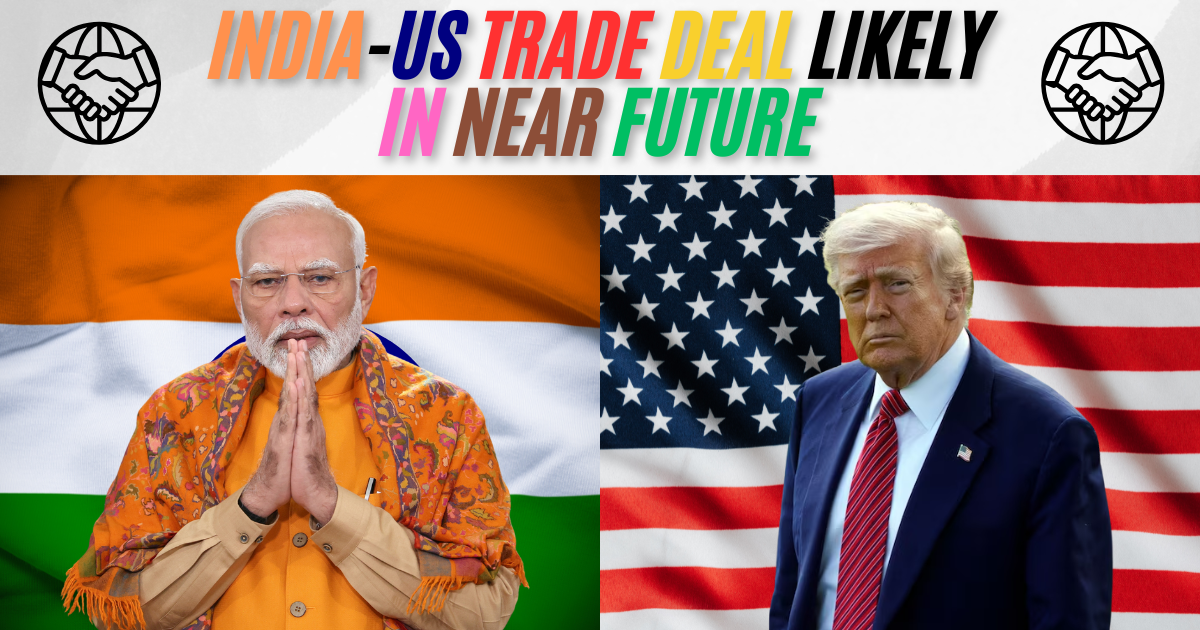India-US Trade Deal Likely in Near Future. Trade negotiations between the United States and India are making progress, and a deal could be finalized soon, U.S. Commerce Secretary Howard Lutnick said on Monday, as both sides push to conclude talks ahead of a July deadline. Lutnick later posted a short video of his remarks on the social media platform X, saying, “We have a great relationship between the countries. I’m optimistic for a trade deal soon that will benefit both nations.” To know more about the topic “India-US Trade Deal Likely in Near Future,” read the complete article.
India-US Trade Deal Likely in Near Future
A trade deal between India and the United States of America will materialize in the “not too distant future,” U.S. Secretary of Commerce Howard Lutnick said on Monday (June 2, 2025), adding that India would receive favorable tariffs on a number of manufacturing sectors that would provide it an advantage over the rest of the world. “Earlier countries get a better deal; that’s the way it is,” Mr. Lutnik said while speaking at the eighth edition of the Leadership Summit hosted by the U.S.-India Strategic Partnership Forum (USISPF) in Washington. “There’s just going to be a pile, but… I think India is trying hard to be one of the first countries, which I appreciate.”

“So the idea is when they put the right person and India put the right person on the other side of the table, and we’ve managed, I think, to be in a very, very good place,” he said in his keynote address. He added, “And you should expect a deal between the United States and India in the not-too-distant future because I think we found a place that really works for both countries.” He stressed the role of effective negotiators, saying, “if they put a normal trade minister, it’s an endless set of talking and no outcome because they’re used to saying, ‘this kind of deal would take three years; we’ll get this done in two years,’ and that’s not really fun for me.”
India-US Trade Deal Talks
In the present trade agreements, India wants a full exemption from the 26 ongoing reciprocal duties imposed on its domestic products. India and the US have agreed on a goal to finalize the starting phase of the proposed BTA before autumn (September-October) this year.
India wants to seek duty cuts in the proposed agreement with America, focusing on sectors that employ a substantial workforce, including textiles, gems and jewelry, leather products, garments, plastics, chemicals, shrimp, oil seeds, chemicals, grapes, and bananas.
The United States, in return, is asking for tariff decreases across several sectors, including industrial products, automobiles (particularly electric vehicles), wines, petrochemical items, dairy products and agricultural goods such as apples, tree nuts and GM (genetically modified) crops.
India adheres to rigorous regulatory standards related to GM crop imports from the US, making their entry unfeasible. However, New Delhi stays receptive to importing non-GM products, including Alpha alpha hay, which is used as cattle feed. The United States kept its position as India’s main trading partner for the fourth straight year in 2024-25, with two-way trade reaching $131.84 billion. The US constitutes approximately 18 percent of Indis’d overall goods exports, 6.22 percent of imports, and 10.73 percent of the nation’s total merchandise trade.
Immediate Impact
For Indian consumers, the agreement will allow American products, including high-end fashion brands, to become more accessible. Duty reductions are likely to make several American FMCG or fast-moving consumer goods, cheaper as well. This comprises dairy products from brands like Danone and Land O’Lakes. The US alcobev industry will also gain significantly, with Bourbon whiskey brands like Jack Daniels and Jim Beam seeing a drop in prices in the Indian market.
Once the deal fructifies, it will likely lead to significant opportunities for India and the US to align with global supply chains. More so since China tariffs remain high, affecting investor sentiment and global businesses. While the broad outlook for the trade agreement stays positive, for Indian policymakers, twin concerns remain. Free flow of labor and data remains a challenge due to the divergent views of New Delhi and Washington, partly because of the current political climate in America.
The US and the EU are New Delhi’s two biggest trading partners, and India is now prioritizing trade agreements with both after signing a major trade agreement with the UK. India’s economic forecast has said that a successful trade pact with the US will “turn the current headwinds into tailwinds.”



